The Saint Louis University School for Science and Engineering Graduate Research Seminar is offered every fall and spring semester, and features professionals from industry and academia sharing their experiences at Saint Louis University.
Occasionally, the speakers are entrepreneurs, SLU students or SLU faculty. Their talks are varied and topics can range from their research, their experiences transitioning from school to career, or instructional.
The Graduate Research Seminar is a great opportunity for students to network and learn from those who have come before them. We believe our graduate students’ experience is enhanced by the inclusion of this seminar. Please see below for some of our recent speakers.
Spring 2022
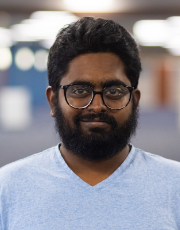 John Kennedy, Ph.D., CFD Analyst, LTA Research and Exploration
John Kennedy, Ph.D., CFD Analyst, LTA Research and Exploration
Title: Whales and Airship
Abstract
Airship and Rorquals (Blue whales and Humpback whales) are some of the largest bodies to fly in air and swim in sea water respectively. They both have highly streamlined bodies with similar aspect ratios. Even though they operate in different mediums, at similar speeds, airships and rorquals exhibit similar flow properties. Due to their large sizes, it is very difficult (nearly impossible with whales) and expensive to study their performances in wind tunnels and water tunnels. However, with the advent of fast computers and advanced commercial codes, hydrodynamic and aerodynamics performances can be evaluated using CFD. Using SC/Tetra, a commercial CFD package, the performance of R100 airship is compared with whales and the challenges that came along with this study are discussed in this presentation.
The R100 airship with dimensions of whales in sea water at 2m/s and full scale R100 airship (219 m) in air at 2m/s have a similar Reynolds number which implies that the fluid physics of R100 airships and whales are the same. The results show that the CFD simulations of R100 models with varying aspect ratios are very close to the experimental solutions (well within the recommended 20% error range). When comparing whales with R100 airship, whales have a higher coefficient of drag due to details such as head, blow hole, ventral groove etc. The performance of humpback and blue whales’ control surfaces were evaluated for various angles of attack.
Bio
John Handel Kennedy was born in Belgium, then moved to India where he completed his schooling and then his undergraduate degree in Mechanical Engineering. After graduation, John moved to Bradley university in Peoria IL where he pursued his master’s in mechanical engineering. During that time, he developed an interest in fluid dynamics and heat transfer. As part of his master's program, he studied fluid flow and heat transfer in concentric helical coils using CFD (Computational fluid dynamics). and experimental analysis. John was also the vice-president of ASHRA (American society of heating refrigeration and air conditioning) chapter at Bradley university. With his experience in CFD, in 2017 John had the opportunity to pursue a PhD at Saint Louis University with Dr. Jean Potvin and Hopkins Marine Station to study marine mammals. John completed his PhD in May 2021 and is currently working as a CFD Analyst with LTA Research and Exploration.
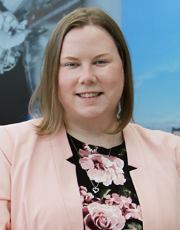 Jen Tennison, Ph.D., Research Scientist in the CHROME Lab, Saint Louis University
Jen Tennison, Ph.D., Research Scientist in the CHROME Lab, Saint Louis University
Title: From One Graduate Student to Another: Foundations of Success
Abstract
Between taking classes, conducting research, and participating in professional development activities, finding the time to learn how to navigate the graduate school ecosystem as a graduate student can be tough. What is my graduate adviser supposed to do? How do I communicate my needs to my adviser? Who do I go to for answers? What can I do to better foster my own success in graduate school? This talk will be dedicated to addressing these questions and more, from a recent graduate's perspective. We'll focus on the graduate student-adviser relationship, mentorship, and how to leverage various resources to support your graduate student tenure.
Bio
Jen Tennison received her PhD in Engineering from Saint Louis University in May 2021. Dr. Tennison is currently a Research Scientist in the CHROME Lab at Saint Louis University. She supports the lab's research projects and helps mentor its students, working closely with her former graduate adviser, Dr. Jenna Gorlewicz. Her current research interests are accessible technology in STEM education and haptics-based, interactive devices.
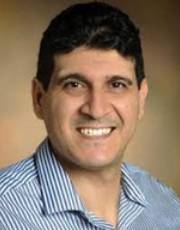 Fathi Amsaad, Ph.D., Assistant Professor and Graduate Program Coordinator for Cybersecurity,
Eastern Michigan University
Fathi Amsaad, Ph.D., Assistant Professor and Graduate Program Coordinator for Cybersecurity,
Eastern Michigan University
Title: Hardware Intrinsic Security for Trusted Electronic Systems
Abstract
The embedded hardware of the electronic system applications relies on microelectronics and embedded semiconductor integrated circuits (IC), like application-specific integrated circuits (ASICs/VLSI), printed circuit boards (BCP), system on chip (SoC) architectures, microcontrollers, microprocessors, electrically erasable read-only memory (EEPROM), and the emerging reconfigurable platforms, i.e., Field Programmable Gate Arrays (FPGAs). Unfortunately, these applications are increasingly integrated into a non-secure supply chain and physical environment, exposing them to new cyber-physical system attacks incorporated by an untrusted third party while fabricating their embedded hardware design. These attacks include reverse engineering, design overbuilding, physical tampering flowed by design cloning, fault injections, malicious hardware modifications, and spontaneous embedded hardware Trojans.
Research in hardware-intrinsic Security has recently gained momentum to ensure electronic system applications are fully secure and protected from ever-evolving cyber and physical attacks. It aims to enable trust in consumer electronics applications by providing a unique layer of protection for the embedded microelectronics and semiconductor integrated circuits (IC) design. Silicon Physical Unclonable Functions (sPUFs) are emerging solutions and state-of-the-art topics in hardware-based security development and research. sPUFs protect semiconductor devices against invasive and non-invasive hardware attacks. This talk will focus on hardware design, Security and reliability performance, and aging in sPUF. It further covers the application of PUFs in protecting semiconductor ICs against embedded hardware Trojans and the development of an efficient reconfigurable low-cost hardware-based security solution for smart system authentication.
Bio
Dr. Amsaad is an Assistant Professor and the Graduate Program Coordinator (GPC) with the School of Information Security & Applied Computing (SISAC) at Eastern Michigan University (EMU). In 2017, Dr. Amsaad earned his Ph.D. in Engineering from the University of Toledo in the area of Hardware Oriented Security and Trust under the supervision of Prof. Niamat. Dr. Amsaad is an active IEEE/ACM member with research in the area of Hardware Oriented Security for Trusted Electronics and Embedded Systems.
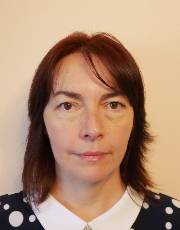 Elena Makareeva, Ph.D., Staff Scientist, Section on Physical Biochemistry, Eunice
Kennedy Shriver National Institute of Child Health and Human Development, National
Institutes of Health
Elena Makareeva, Ph.D., Staff Scientist, Section on Physical Biochemistry, Eunice
Kennedy Shriver National Institute of Child Health and Human Development, National
Institutes of Health
Title: Non-canonical Cellular Stress Response to Type I Procollagen Misfolding in Osteogenesis Imperfecta
Abstract
Collagens are the most abundant proteins in humans and are broadly expressed in various tissues, fulfilling diverse mechanical and biological functions. Type I collagen is the main component of bone matrix and other connective tissues. Mutations in type I procollagen (collagen precursor) and in proteins involved in its biosynthesis are known to cause osteogenesis imperfecta, a hereditary disorder characterized by bone fractures and skeletal deformities. Recent advances in the genetics of osteogenesis imperfecta underscore the long-held belief that understanding regulation of type I collagen biosynthesis, structure and function is crucial for understanding and treating osteogenesis imperfecta. In this talk I will provide the essential background information and highlight recent progress in studies of the type I procollagen biosynthesis regulation, its unconventional quality control and trafficking, and an unusual cellular response to procollagen misfolding. Understanding molecular mechanisms involved in type I collagen dysregulation and malfunction in osteogenesis imperfecta, might uncover new targets for developing novel approaches to treat bone pathology.
Bio
Elena Makareeva is a staff scientist in the Section on Physical Biochemistry at the Eunice Kennedy Schriever National Institute of Child Health and Human Development, the National Institutes of Health, Bethesda MD. Dr. Makareeva received a MSc in chemistry at Nizhny Novgorod State University and PhD in biophysics at the Institute of Biochemical Physics, National Academy of Sciences, Moscow, Russia. Dr. Makareeva’s research is focused on understanding molecular mechanisms of connective tissue disorders and finding treatable targets for osteogenesis imperfecta.
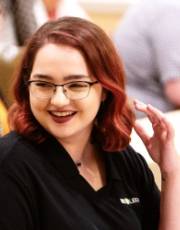 Annette Kilian, Master's Student and Instructor in the Department of English, Consultant
with University Writing Services at Saint Louis University
Annette Kilian, Master's Student and Instructor in the Department of English, Consultant
with University Writing Services at Saint Louis University
Title: A Guide to Literature Reviews
Abstract
A literature review is a document or section of a document that collects key sources on a topic and discusses those sources in conversation with each other. The lit review is an important genre in many disciplines, and there is a lot to keep in mind when writing one effectively.
Bio
Annette Kilian is a Master's student and instructor in the Department of English as well as a consultant with University Writing Services.
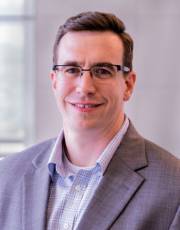 Daniel Alge, Ph.D., Associate Professor, Department of Biomedical Engineering, Texas
A&M University
Daniel Alge, Ph.D., Associate Professor, Department of Biomedical Engineering, Texas
A&M University
Title: Engineering Tissues with Poly(Ethylene Glycol) Hydrogels - Convergence of Chemistry, Biology, and Materials Science
Abstract
Approximately 10% of all tissue engineering studies to date have utilized poly(ethylene glycol) (PEG) based hydrogel scaffolds. The remarkable popularity of PEG hydrogels stems from the fact that these biomaterials are widely regarded as biologically inert “blank slates” that can be modified with bioactive cues to dictate cell-material interactions and orchestrate a desired biological outcome. However, myriad strategies for PEG hydrogel synthesis exist, and the nuances of different crosslinking chemistries are generally unappreciated. Moreover, mounting evidence on the immunogenicity of PEG contradicts the assumption that PEG hydrogels are inert. In this talk, I will share recent research from my lab on these two important topics. With regards to PEG hydrogel synthesis, I will discuss our work on PEG hydrogel crosslinking via bio-orthogonal tetrazine-norbornene click chemistry. We have discovered that this particular crosslinking chemistry dramatically alters hydrogel properties and can be leveraged for dynamic stiffening and even supramolecular assembly. I will also discuss our work synthesizing PEG hydrogels from microgel building blocks, rather than the conventional approach of using aqueous precursors. With regards to PEG immunogenicity, I will share recent results from our pioneering studies on the impact of adaptive immune responses against PEG on tissue engineering efficacy with PEG hydrogels. In this work, we have immunized mice against PEG prior to treating calvarial bone defects with a growth factor-loaded PEG hydrogel. Our results show a significant effect on bone healing and have important implications for future work in tissue engineering.
Bio
Dr. Daniel Alge is an associate professor in the Department of Biomedical Engineering at Texas A&M University, where he directs the Bio-Instructive Materials Lab. Prior to joining the faculty of TAMU in 2014, he was a postdoctoral fellow in the Department of Chemical and Biological Engineering at the University of Colorado Boulder. He earned a Ph.D. in Biomedical Engineering from Purdue University in 2010 and a B.S. in Biosystems Engineering from Clemson University in 2006. Dr. Alge’s research program is focused on hydrogel biomaterials, with emphases on synthesis methods and applications in tissue engineering and regenerative medicine as well as medical device development. His research has been funded by the National Institutes of Health, National Science Foundation, Bill and Melinda Gates Foundation, and Craig H. Neilsen Foundation. His list of awards includes the Texas A&M University Association of Former Students Distinguished Achievement in Teaching Award – University Level (2022), Montague – Center for Teaching Excellence Scholar award (2019), Dean of Engineering Excellence Award – Assistant Professor Level (2020), and Cain Faculty Fellowship (2021).
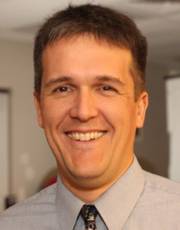 Michael Swartwout, Ph.D., Associate Professor of Aerospace & Mechanical Engineering,
Parks College at Saint Louis University
Michael Swartwout, Ph.D., Associate Professor of Aerospace & Mechanical Engineering,
Parks College at Saint Louis University
Title: 1600 CubeSats in 20 Years...How Did This Happen? And What Now?
Abstract
Twenty years ago, the concept of a CubeSat was invented. Originally intended to be a 10 cm cube-shaped spacecraft ejected from a box, the CubeSat was dismissed as a stunt or toy, too small to be useful for anything but university-built “beepsats”. Well, since then, more than 1600 CubeSats have flown, only a small fraction of which are university-built. So what happened? In this talk, we will review the history of CubeSats, identify what it was about the CubeSat that has made it so popular, and give an overview of the missions and challenges associated with CubeSats. From there, we will abruptly transition to our current research in CubeSat missions: mission assurance [or, proving in advance that your multimillion dollar mission will, in fact, work] and methods to define mission complexity [so that you can understand if you’re too ambitious in your spacecraft plans]. We’ll finish with avenues for future work so that you, too, could join us in space mission research.
Bio
Mike Swartwout is an Associate Professor of Aerospace & Mechanical Engineering at Saint Louis University. He earned his BS and MS in aerospace engineering from the University of Illinois and his PhD in Aeronautics & Astronautics from Stanford University. He has been full-time at SLU since 2009. His research and teaching interests are in spacecraft design, autonomy and mission assurance. He has worked on four launched spacecraft (Sapphire, COPPER, Argus, Argus-2) and contributed to four Space Shuttle payloads. (Which, at this point, proves that he is old.)
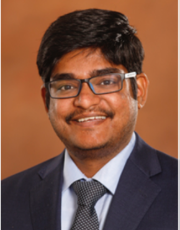 Prasanth Yanambaka, Ph.D., Assistant Professor of Computer Engineering, Central Michigan
University
Prasanth Yanambaka, Ph.D., Assistant Professor of Computer Engineering, Central Michigan
University
Title: Hardware Assisted Security for Internet of Things
Abstract
Internet of Things (IoT) has evolved significantly over the past two decades. With the global pandemic that has been in the world over the past two years, we are relying on technology more than ever. Many people are working from home. This has given rise to an increased usage of Smart Devices at home both for personal and professional use. With more focus on health and fitness these days, use of health tracking devices is giving rise to issues in security and privacy. The number of cyber-attacks has exploded over the past two years. Internet of Vehicles (IoV) is another area of research besides Internet of Medical Things (IoMT) that researchers around the world are focusing on right now. Driverless cars have already become a reality in some places. More components of vehicles are becoming electronic which has given rise to the vulnerabilities. Attacks on Smart Vehicle systems has increased recently and have become a threat to the society. With such attacks on healthcare and transportation, the security and privacy of devices has become paramount.
Hardware Assisted Security is one of the potential solutions to secure the environment from attackers. Physical Unclonable Functions (PUF) are a Hardware Assisted Security module capable of generating natural random numbers for cryptographic purposes. PUF uses manufacturing variations introduced during the fabrication process of an Integrated Circuit to generate keys for security applications. The keys generated by PUF are used for various purposes including device authentication, encryption and decryption. A PUF key is unique to the module it is generated in and acts as a fingerprint for the circuit. It can help to generate the security keys on the fly through which we can avoid storing the keys in memory on the devices. This talk presents how a PUF key can be used for various authentication protocols for IoT, IoV and IoMT. The talk also explores the future directions of research in the areas of Hardware Assisted Security in IoMT and IoV.
Bio
Dr. Prasanth Yanambaka is an Assistant Professor of Computer Engineering in School of Engineering and Technology at Central Michigan University, Mount Pleasant. He received his Ph.D. in Computer Science and Engineering from University of North Texas, Denton, TX in 2019. His research focus is on Internet of Things (IoT) and developing Hardware-Assisted Security primitives for IoT architectures. He is an author of 30 publications which include multiple journal/transaction articles and book chapter. He has served as a reviewer for many peer-reviewed journals and conferences. He is an active member of IEEE since 2012.
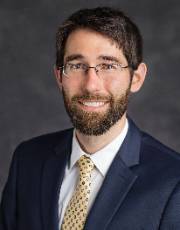 Patrick Singleton, Assistant Professor in Transportation, Department of Civil and
Environmental Engineering, Utah State University
Patrick Singleton, Assistant Professor in Transportation, Department of Civil and
Environmental Engineering, Utah State University
Title: Pedestrian Volume Data from Traffic Signals: Models and Methods for Monitoring, Planning, Safety, and Other Applications
Abstract
Data from pedestrian push-button presses at traffic signals offer a novel and cost-effective opportunity to obtain pedestrian volumes and levels of activity across many locations and over time. In this presentation, I cover several research projects to validate and apply pedestrian traffic signal data and volume estimates for various transportation monitoring, planning, and safety applications. Through a large-scale effort involving counting 175,000 pedestrians from 10,000 hours of video at 90 signalized intersections in Utah, we demonstrate that push-button data could predict pedestrian volumes with an average error of +/- 3 pedestrians per hour. We then use these data and models in several applications: (1) to forecast pedestrian volumes using land uses and the built environment; (2) to enhance pedestrian safety analysis through improved measures of exposure; (3) to assess the sensitivity of pedestrian activity to weather and air quality; and (4) to monitor changes in walking related to the COVID-19 pandemic.
Bio
Dr. Patrick Singleton is an Assistant Professor of Transportation in the Civil and Environmental Engineering Department at Utah State University. His research spans the areas of travel behavior, transportation planning, travel demand modeling, and traffic safety, specializing in active transportation, data analysis, connections with health and well-being, and the intrinsic value of traveling. Dr. Singleton is an appointed member of the Transportation Research Board’s Standing Committee on Pedestrians, and serves on the editorial board of the “Travel Behavior and Society” journal. He earned his B.S. from the University of Pittsburgh and his M.S. and Ph.D. from Portland State University.
Blythe Burkhardt, J.D., Associate General Counsel for SLU and Anne Miller, Director of Research Commercialization for the Office of the Vice President for Research @ SLU
Title: Intellectual Property in the Academic Setting
Abstract
This talk will provide a brief overview of the types of intellectual property (IP) developed in the academic research setting, explain how the University protects and manages its IP, and explore researcher responsibilities with respect to protecting and using IP.
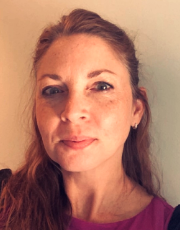 Blythe Burkhardt
Blythe Burkhardt
Blythe Burkhardt has been an Associate General Counsel at SLU since November of 2012. Her practice areas are business transactions, research compliance, international education, and intellectual property. She conducts contract review and negotiation and provides advice and guidance to various SLU offices, departments, and divisions on a variety of legal and operational matters. Blythe is licensed to practice law in Missouri, has served as an adjunct instructor in the Washington University School of Law and the Webster University Legal Studies department, and provides legal consulting for the Donald Danforth Plant Science Center, Castle IRB, and Ripples Foundation USA. She is a volunteer with the St. Louis Volunteer Lawyers and Accountants for the Arts and the Ready Readers program and is on the board of Artscope, an arts education organization. She received her J.D. from the University of Iowa College of Law, a master’s degree in Educational Policy and Administration from the University of Minnesota, and a bachelor’s degree in Anthropology from Iowa State University.
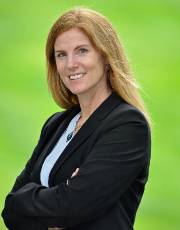 Anne Miller
Anne Miller
Anne Miller is the Director of Research Commercialization for the Office of the Vice President for Research at Saint Louis University. She oversees the University’s intellectual property portfolio and industry licensing activities. In addition, Anne and her team work to promote innovation and entrepreneurship though programs such as SLUStart I-Corps (slustart.com). Anne has a B.A. in political science, and an M.A. in leadership and organizational behavior.
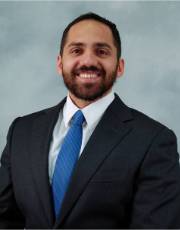 Dr. Abraham Qavi, M.D., Ph.D., Physician Scientist, Department of Pathology and Immunology,
Washington University School of Medicine
Dr. Abraham Qavi, M.D., Ph.D., Physician Scientist, Department of Pathology and Immunology,
Washington University School of Medicine
Title: Redefining the Bioanalytical Toolkit for Pathogens Through Optical Sensors
Abstract
Neglected tropical diseases encompass pathogens that predominantly affect the most impoverished populations of the world. The Centers for Disease Control and Prevention (CDC) estimates that over 1 billion people are affected by neglected tropical diseases annually, yet despite the enormous health and economic burden imposed, there is a shortage of pharmaceutical treatments and healthcare resources allocated to these diseases. Critical in our ability to combat these diseases are technologies that enable the rapid and accurate diagnosis of pathogens in resource limited settings. Herein, I highlight two optical technologies to help address these critical diagnostic gaps – photonic resonators and plasmonic fluors. Combined, these technologies represent the basis of a versatile diagnostic pipeline that can be adapted towards a variety of pathogens.
Bio
Abraham Qavi is currently a physician scientist with the Department of Pathology & Immunology at the Washington University School of Medicine. He completed his undergraduate studies at the University of California Irvine, double-majoring in Chemistry and Biochemistry & Molecular Biology. He subsequently matriculated in the Medical Scholars Program at the University of Illinois at Urbana-Champaign, where he completed his MD, as well as PhD in Chemistry under the supervision of Prof. Ryan C. Bailey. His thesis focused on the development of a photonic resonator sensor platform for the detection of nucleic acids. Dr. Qavi completed medical residency in Clinical Pathology at Washington University in St. Louis and Barnes Jewish Hospital, where he served as Chief Resident during this period. Afterward, he continued as part of the Physician Scientist Training Program where he is currently co-mentored by Professors Lan Yang and Gaya Amarasinghe. His research interests involve the implementation of optical sensor technologies for the detection of emerging and reemerging diseases.
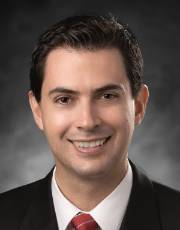 Dr. David Lazzara, Aerodynamics Engineer with the Advanced Aero Design Team in Boeing
Research & Technology Flight Sciences
Dr. David Lazzara, Aerodynamics Engineer with the Advanced Aero Design Team in Boeing
Research & Technology Flight Sciences
Title: Recent Sonic Boom Studies to Enable Robust Supersonic Vehicle Design
Abstract
Modern supersonic aircraft design has expanded beyond traditional aerodynamic performance metrics to include the shaping of sonic boom signatures to lower their perceived loudness on the ground. The challenge of achieving a low boom is magnified when robustness to changing flight conditions and atmospheric properties is also desired. This talk explores the changing sonic boom performance for a low-boom configuration designed by NASA for variations in Mach number, angle-of-attack, and atmospheric properties during supersonic cruise. Configuration aspects that contribute to the robustness of sonic boom waveforms are highlighted. Potential configuration changes to mitigate these issues are also identified to guide the development of aircraft morphing strategies using shape memory alloys.
Bio
David Lazzara is an Aerodynamics Engineer with the Advanced Aero Design team in Boeing Research & Technology Flight Sciences. He contributes expertise in aerodynamic shape optimization, CFD applications, MDAO, computational geometry, and aerodynamics on a variety of flagship design efforts spanning transonic, supersonic and hypersonic regimes. These include the Blended Wing Body, Transonic Truss-Braced Wing, Aerion supersonic design, rotorcraft, and Low-Boom Flight Demonstrator throughout his nine year Boeing career. David was a Boeing co-PI in research with MIT colleagues on innovative MDAO and multifidelity methods and also with Texas A&M University and other institutions through a NASA ULI sonic boom robustness program. David completed his Ph.D. at MIT and is an adjunct professor in aircraft design and design optimization to both undergrad and graduate students at the University of Southern California, is the founder and chair of the AIAA Supersonics Integration and Outreach Committee, member of the Applied Aerodynamics AIAA Technical Committee, and member of the Boeing Leadership Next 2019 class. Today David continues to advance conventional and unconventional aircraft design with novel approaches within Boeing.
Fall 2021
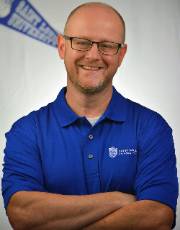 Henning Lohse-Busch, Ph.D., Director of Business Development and Outreach (BDO) at
the Geospatial Institute @ SLU
Henning Lohse-Busch, Ph.D., Director of Business Development and Outreach (BDO) at
the Geospatial Institute @ SLU
Title: Efficiency analysis of a hydrogen fuel cell powered vehicle
Abstract
The talk will discuss the fuel cell stack and system efficiency curves for a Toyota Mirai and how this system efficiency translates into fuel economy results. The fuel cell idle fuel flow, the impact of sub-freezing temperatures and the maximum power production will be presented as well on the fuel cell system level. The presentation will include a brief vehicle efficiency comparison between a conventional car, a hybrid car, an electric car and the fuel cell car.
Bio
Henning is the Director of Business Development and Outreach (BDO) at the Geospatial Institute at Saint Louis University. He has the privilege to support the SLU faculty in their research, promote the education programs and build new partnerships. The Geospatial Institute at Saint Louis University (GeoSLU) aims to use location science to understand our ever-changing world. Its faculty and students are an interdisciplinary team dedicated to advancing research, education, and services in geospatial science and technology to examine how location impacts a variety of complex issues. Dr. Lohse-Busch ran a consulting company (Lohse-Busch Technical Services, L.L.C) which provided services to National Laboratories. He previously managed the Vehicle Systems Research Section at Argonne National Laboratory which included the Advanced Powertrain Research Facility. His area of expertise is testing of advanced technology vehicles such as HEVs, PHEVs and BEVs as well as alternative fuel vehicles. He holds a Ph.D. in mechanical engineering from Virginia Polytechnic Institute and State University. Henning is a graduate of the U.S. DOE’s Advanced Vehicle Technology Competitions, then called FutureTruck.
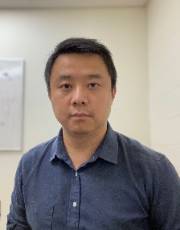 Li Hui, Ph.D., P.E., Visiting Assistant Professor, Civil Engineering, University of
Louisiana at Lafayette
Li Hui, Ph.D., P.E., Visiting Assistant Professor, Civil Engineering, University of
Louisiana at Lafayette
Title: Limiting Exterior Girder Rotation for Bridge Deck Construction using Pipe-Tie System
Abstract
The bridge deck construction often involves different types of construction equipment to accelerate the construction procedure and form a smooth deck surface. To support the construction equipment such as the deck finishing machine and other construction loads, overhang formwork systems have to be used during bridge deck construction. In this case, the construction loads transfer through the overhang formwork system to the exterior girder, resulting in significant torsional moments acting on the exterior girder and leading to excessive rotation during the bridge deck construction. The traditional temporary rotation prevention system uses block-tie systems to resist the torsional forces in the girders; however, this system often loses its effectiveness due to the tightening issues of ties and the improper shimming of timber blocks. In this presentation, a newly developed girder bracing system, pipe-tie system, will be introduced and evaluated through field bridge monitoring and finite element analysis. A comparison between the traditional rotation prevention system and the pipe-tie system was conducted to evaluate the performance of these systems for bridge deck construction. The results indicate that the pipe-tie system effectively limits the exterior girder rotation during bridge deck construction.
Bio
Li Hui is a visiting assistant professor in the Civil Engineering Department at University of Louisiana at Lafayette. He received his doctorate in Civil/Structural Engineering from Saint Louis University in 2019. His research involves bridge construction, monitoring, numerical simulation, large-scale testing, and structural behavior under multi-hazards. His research has been presented in several articles published in journals and conference proceedings. Li is registered as a professional engineer, and his experience includes more than eight years in industry and academia. His industrial experiences are mainly focused on bridge design, analysis, non-destructive testing, and construction monitoring for large bridges. He is a member of the American Society of Civil Engineering (ASCE) and the American Concrete Institute (ACI).
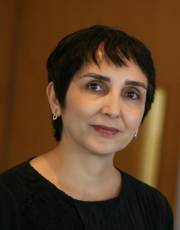 Raziyeh Farmani, Ph.D., Associate Professor, College of Engineering, Mathematics,
and Physical Sciences, University of Exeter
Raziyeh Farmani, Ph.D., Associate Professor, College of Engineering, Mathematics,
and Physical Sciences, University of Exeter
Title: Sustainable and Resilient Water Systems
Abstract
This presentation will provide an overview of Centre for Water Systems, University of Exeter, UK and summary of past and current ongoing research projects. The talk will also focus on two research projects on flood resilience and smart water metering. The flood resilience work is based on Safe & SuRe project in which a framework has been developed for urban water resilience. The main concept behind the framework will be explained and its application to a case study will be provided. The smart water metering project’s focus is on role of smart meters at domestic buildings in improving efficient operation and management of water distribution systems.
Bio
Professor Farmani is an associate professor of water engineering and Industrial Fellow of Royal Academy of Engineering at Centre for Water Systems, University of Exeter. She is the Chair of IWA's Intermittent Water Supply Specialist Group. She specializes in urban water systems modeling, water resources management and asset management and has expertise in multi-objective optimization of water networks. Her research interests covers evolutionary optimization, artificial intelligence and data mining and their applications in real-time control of water systems, asset management of water distribution systems including leakage analysis, pressure and energy management, reliability and resilience, asset failure and deterioration modeling.
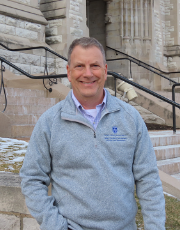 Stephen Belt, Ph.D., Associate Professor of Aviation Science and Chief Diversity Officer
at Parks @ SLU
Stephen Belt, Ph.D., Associate Professor of Aviation Science and Chief Diversity Officer
at Parks @ SLU
Title: Diversity, Equity and Inclusion at Parks College
Abstract
Join Stephen Belt, Parks College Chief Diversity Officer, for a conversation about Diversity, Equity, and Inclusion within the fields of Engineering and Aviation and here at Parks. Dr. Belt with present an overview of the current situation and then facilitate a discussion around how we can move our community forward toward greater diversity, equity, and inclusion.
Bio
Stephen Belt, Ph.D., is an associate professor of aviation science and serves as the Chief Diversity Officer of Parks College of Engineering, Aviation and Technology. He joined the aviation science department in 1998 and has served as department chair, flight training director, senior check airman, instructor, and pilot. His research is focused on aviation education, and aviation-based outreach and service learning. Belt is also a founding member of Claver House Community and Revitalization 2000, Inc., and an active member of the Ville Collaborative.
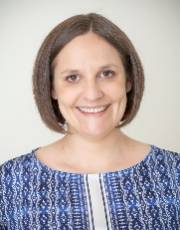 Stephanie Seidlits, Ph.D., Assistant Professor, Bioengineering, Samueli School of
Engineering, UCLA
Stephanie Seidlits, Ph.D., Assistant Professor, Bioengineering, Samueli School of
Engineering, UCLA
Title: Engineering Central Nervous System Tissues
Abstract
The Seidlits lab works to design matrix-mimetic biomaterials for engineering tissues of the central nervous system (CNS). We work with hyaluronic acid (HA), a major component of the extracellular matrix (ECM) in the CNS, as a base material to create ex vivo models of brain and tumor tissues. I will discuss our work modeling glioblastoma (GBM), the most lethal, yet common, cancer originating in the brain. We have developed HA-based culture platforms that provide a controlled experimental context in which to characterize how the ECM microenvironment facilitates GBM tumor aggression. These biomaterial-based cultures of patient-derived GBM cells can model several aspects of clinical tumors, including 1) kinetics of acquired resistance to chemotherapies and 2) vasculature-associated infiltration. In addition, I will discuss our work developing injectable scaffolds to interface with the spinal cord and deliver potent biological therapies, such as genetic vectors and stem cells, to promote regeneration after injury.
Bio
Stephanie Seidlits joined the Department of Bioengineering at UCLA as an Assistant Professor in 2014. Dr. Seidlits' research seeks to develop multifaceted therapies for the central nervous system that utilize biomaterial platforms to both model and directly alter the pathological microenvironment. She obtained a B.S. in Bioengineering from Rice University and went on to receive both M.S. and Ph.D. degrees in Biomedical Engineering from the University Texas at Austin under the mentorship of Dr. Christine Schmidt and Dr. Jason Shear. Dr. Seidlits then trained as an NIH NRSA post-doctoral fellow in Chemical and Biological Engineering at Northwestern University under the mentorship of Dr. Lonnie Shea. Dr. Seidlits was honored with an NSF CAREER Award, the 2019 Society for Biomaterials Young Investigator Award, a 2019 Biomedical Engineering Society Young Innovator in Cellular and Molecular Bioengineering, a 2020 Rising Star in Cellular and Molecular Bioengineering Award from the Biomedical Engineering Society and the 2020 UCLA Northrop Grumman Excellence in Teaching Award.
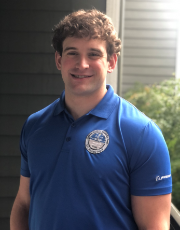 Joseph O'Neill, Aerodynamics Engineer, Airplane Configuration and Low Speed Aerodynamics,
Boeing
Joseph O'Neill, Aerodynamics Engineer, Airplane Configuration and Low Speed Aerodynamics,
Boeing
Title: Networking and Job Application Hints for Industry
Abstract
Often, the notion of finding a job both in and outside of industry can be daunting. This presentation is meant to offer insight on why networking both inside and outside of a company can smooth over the job search for young individuals looking to start their professional careers. A common method of interviewing will be discussed, in addition to shedding some light on how to better understand a job application in addition to matching your resume to the application.
Bio
Joseph O’Neill is currently working as an aerodynamics engineer at Boeing performing icing analysis on commercial aircraft in Everett, WA. Prior to this, he spent two years at Boeing STL working for P8 Training Systems where he supported delivery and development of various simulators and trainers for the P8 program. He graduated with a B.S. in aerospace engineering from SLU in 2018, followed up by his M.S. in engineering in 2019 where he worked with Dr. Mark McQuilling on various wind tunnel and CFD related projects. Outside of work, O’Neill is an avid hiker, weightlifter, and dog lover.
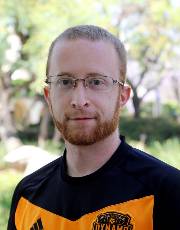 Eric Ambrose, Ph.D. Candidate, AMBER (Advanced Mechanical Bipedal Experimental Robotics)
Lab, California Institute of Technology
Eric Ambrose, Ph.D. Candidate, AMBER (Advanced Mechanical Bipedal Experimental Robotics)
Lab, California Institute of Technology
Title: The Design of Hopping Robots for Improved Efficiency and Controllability
Abstract
Hopping is a mode of locomotion which undergoes rapid changes in contact with the world, often in an extreme manner. As with other types of legged locomotion, this behavior can be modeled as a hybrid system with both continuous and discrete dynamics. Often, it is assumed that the physical model present is fixed, and the goal is then to create ideal motion trajectories for a specific task. However, by allowing the physical parameters of the robot to be designed in the loop with these motions, it is possible to achieve greater performance. This talk will present multiple hopping models and design-in-the-loop optimization strategies used to create hopping robots with improved energy efficiency and controllability, along with videos of them in action.
Bio
Eric Ambrose is a Ph.D. candidate, working in the field of legged robotics as a part of the AMBER lab at Caltech. His research focuses on the physical design of robots and how this can be shaped to improve the efficiency, robustness, and controllability of systems with underacted and hybrid dynamics. Eric earned his B.S. in mechanical engineering from Georgia Tech and M.S. in mechanical engineering from Caltech. Along with his research,Ambrose has also been working part-time on the RiNG Arm project at NASA-JPL for the past year and a half.
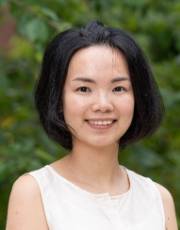 Weiwei Mo, Ph.D., Associate Professor, Department of Civil and Environmental Engineering,
University of New Hampshire
Weiwei Mo, Ph.D., Associate Professor, Department of Civil and Environmental Engineering,
University of New Hampshire
Title: Converging on Water Infrastructure Sustainability: Spatial Design of Urban Decentralized Water Systems Considering Consumer Preferences
Abstract
Centralized systems are the dominant form of water supply and treatment in the US. Most of these systems are aged with an estimated over $1 trillion pipeline maintenance backlog. They also lack adaptability to natural and manmade threats. Decentralized, household water systems, such as rainwater harvesting and greywater recycling systems, are increasingly discussed or integrated into the existing centralized water networks. However, our understandings related to the consumer preferences of the decentralized systems, the influence of their adoption on the centralized network, and their optimal spatial distribution remain limited. To address these knowledge gaps, we developed a holistic framework to capture, analyze, and project the possible outcomes of the integration of centralized and decentralized water systems, and apply it to two major metropolitan areas, Boston, MA and Atlanta, GA. First, choice experiments were applied to characterize individual preferences, considering the economic costs and environmental impacts of the integration of centralized and decentralized systems. The estimated individual preferences were then used in a spatial agent-based model, designed to model spatially explicit adaptation trajectories and patterns in accordance with utility functions and characteristics of the major metropolitan case study locations. The agent-based model interfaces with a system dynamics model that considers interactions among centralized and decentralized infrastructure systems and characterizes the overall system sustainability and resiliency. The results were then compared to a spatial multi-objective optimization model, which informs the design of policies and incentives to achieve the scientific optimum.
Bio
Dr. Weiwei Mo is an Associate Professor in the Department of Civil and Environmental Engineering at University of New Hampshire. She got her BS degree from Shanghai Jiao Tong University in China (2008), and her MS (2011) and PhD (2012) degrees from University of South Florida. Before coming to UNH, she was a post-doctoral associate at Yale University. Dr. Mo’s expertise lies in sustainability and resiliency assessment, infrastructure system planning and management, and social-infrastructure-ecological systems modeling. She has led several National Science Foundation (NSF) funded projects, working on interdependent infrastructure systems management, spatial optimization of decentralized infrastructure systems considering user preferences, crowdsourced water quality monitoring, and drinking water emergency response and planning. She received an NSF CAREER award in 2021. She teaches undergraduate and graduate level classes, including environmental pollution and control, environmental sampling and analysis, systems analysis of the environment, and life cycle assessment.
Blythe Burkhardt, J.D., Associate General Counsel for SLU; Matthew Christian, Ph.D., Associate Vice President for Research, Chief of Staff, and Research Integrity Office at SLU; Jalil Kianfar, Ph.D., Associate Professor of Civil Engineering, Parks @ SLU; Scott Sell, Ph.D., Associate Professor and Program Coordinator for Biomedical Engineering, Parks @ SLU
Title: Panel on Research Ethics, Integrity, and Misconduct
Abstract
Our Panel on Research Ethics, Integrity, and Misconduct will include SLU and Parks faculty and staff to discuss experiences and best practices in regards to research. Each panel member will speak for a few minutes and then we will have a Q&A. Attendees will be encouraged to ask questions regarding their experiences or future work.
 Blythe Burkhardt
Blythe Burkhardt
Blythe Burkhardt has been an Associate General Counsel at SLU since November of 2012. Her practice areas are business transactions, research compliance, international education, and intellectual property. She conducts contract review and negotiation and provides advice and guidance to various SLU offices, departments and divisions on a variety of legal and operational matters. Blythe is licensed to practice law in Missouri, has served as an adjunct instructor in the Washington University School of Law and the Webster University Legal Studies department, and provides legal consulting for the Donald Danforth Plant Science Center, Castle IRB and Ripples Foundation USA. She is a volunteer with the St. Louis Volunteer Lawyers and Accountants for the Arts and the Ready Readers program and is on the board of Artscope, an arts education organization. She received her J.D. from the University of Iowa College of Law, a master’s degree in Educational Policy and Administration from the University of Minnesota, and a bachelor’s degree in Anthropology from Iowa State University.
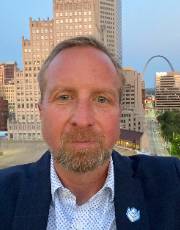 Matthew Christian
Matthew Christian
Matthew Christian is the Associate Vice President for Research, Chief of Staff, and Research Integrity Officer at Saint Louis University. In that role, he oversees all operational aspects of research at SLU, including accounting, reporting and analysis, audit, grants management, and research integrity and safety. Prior to arriving at SLU in 2016, Matthew spent ten years at the University of Chicago where he was the Associate Provost and Chief of Staff, Associate Dean for Social Sciences, and Assistant Vice President for Research. He also co-founded and launched OrthoAccel, a biotechnology company that developed an orthodontic product called Acceledent. Matthew is a founder and former board member of the National Association for Research Development Professionals (NORDP) and a co-founder of the IVY+ Deputy Research Officers Network. Locally he is a founding board member of Navigate StL Schools, a non-profit focused on helping families find the right schools for their children.
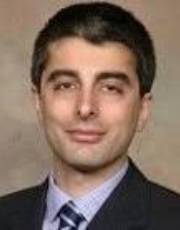 Jalil Kianfar
Jalil Kianfar
Dr. Jalil Kianfar is an associate professor of civil engineering at Saint Louis University and a registered professional engineer (P.E.) in the state of Missouri. Dr. Kianfar research interests and background includes traffic operations and roadway safety, construction zones and work zone traffic control, and smart cities.
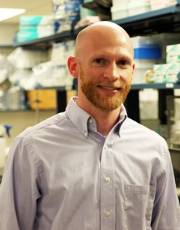 Scott Sell
Scott Sell
Scott A. Sell, Ph.D. is currently an associate professor and the biomedical engineering program coordinator in Parks College of Engineering, Aviation, and Technology at Saint Louis University. Prior to joining SLU in August of 2012, Dr. Sell received his education from Virginia Commonwealth University (BS in BME ’03; MS in BME ’06; and Ph.D. in BME in ’09), and spent three years conducting clinical tissue engineering research as a Polytrauma Research Fellow at the Hunter Holmes McGuire VA Medical Center in Richmond, VA.
Dr. Sell’s Tissue Engineering Scaffold Fabrication Lab focuses on the fabrication and evaluation of tissue engineering scaffolds capable of replicating both the form and function of the native extracellular matrix (ECM). Of principal interest is the fabrication of scaffolds capable of promoting wound healing and the filling of large tissue defects, as well as orthopaedic applications such as bone and intervertebral disc repair. Dr. Sell is also heavily interested in engineering and entrepreneurship education; having worked closely with both the Kern Entrepreneurial Engineering Network (KEEN) and the Coleman Foundation, and been selected to participate in the National Academy of Engineering’s Frontiers of Engineering Education Symposium in 2016.
Dr. Sell has over 90 peer reviewed publications, over 200 conference abstracts, nearly 6000 citations of his work, and has submitted 10 patents and invention disclosures. He has also been the recipient of several prestigious awards during his time at SLU: the Association of Parks College Students Outstanding Faculty of the Year Award, Saint Louis University’s Junior Faculty Grantwinner Award for Excellence in Research, the Outstanding Graduate Faculty Award for Parks College, and Saint Louis University’s Outstanding Faculty Mentorship Award.
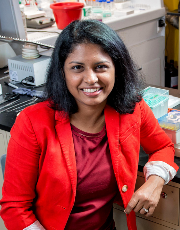 Preethi Chandran, Ph.D., Associate Professor of Chemical Engineering at Howard University,
Washington DC and Director of Graduate Studies
Preethi Chandran, Ph.D., Associate Professor of Chemical Engineering at Howard University,
Washington DC and Director of Graduate Studies
Title: Glycan biophysics and how it percolates virus aggregation, biomolecular self-assembly, cell delivery, tissue mechanics, and of course modeling
Abstract
The surface of cells, proteins, and pathogens is covered with a string of sugars called glycans. Of the two major types of glycans, N-glycans are the most prevalent and the sequence of sugars in it has been well conserved evolutionarily. So we ask what is the biophysical relevance of the sugar sequence in N-glycans? And if it can be harnessed for self-assembly and cell delivery? Using a virus platform to present these sugars, we are trying to tease out the biophysics rendered unique to each sugar. It appears that aggregation of viruses follows the biophysics of the terminal sugars. Sugars like mannose can be used to assemble buckling shells of DNA, which can in turn be stuffed with proteins for co-delivering DNA and proteins into cells. We also consider how O-glycans, the other predominant type, affect cartilage mechanics and strategies for modeling biological matrices where the interfacial phenomena can be controlled by the sugars on the filaments.
Bio
Preethi Chandran obtained her PhD from the University of Minnesota in Biomedical Engineering, followed by brief postdoctoral stints at Columbia University, New York, and at the University of California, Berkeley, before a IRTA fellowship at the National Institutes of Health, Maryland. Dr. Chandran is currently Associate Professor of Chemical Engineering at Howard University, Washington DC and is the Director of Graduate Studies. She is the Director of the Biomolecular Assemblies and Nanomechanics lab at Howard University where she enjoys teaming with a band of students trying to infuse biophysical order in what is usually considered a gooey mess on biological matter – the glycans.
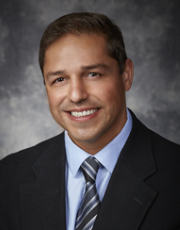 Arif S. Malik, Ph.D., Associate Professor, Department of Mechanical Engineering, The
University of Texas at Dallas
Arif S. Malik, Ph.D., Associate Professor, Department of Mechanical Engineering, The
University of Texas at Dallas
Title: Simulation of Powder-Based Additive Manufacturing and Post-Processing Operations
Abstract
Discussed first is a new Dynamic Kinetic Monte Carlo (KMC) method for predicting grain structures in additively manufactured metals fabricated by laser-based powder bed fusion techniques. The distinguishing technical feature in the Dynamic KMC method is that, unlike existing KMC methods, it updates both the melt pool (MP) and heat affected zone (HAZ) boundaries at every frame of time within the underlying Potts model during grain nucleation and growth. The model thus captures evolution of microstructure due to both intralayer and interlayer heat accumulation during the additive build process. Simulation results are demonstrated for a 6-layer, thin-walled, Inconel 625 structure. Following introduction of the Dynamic KMC microstructure prediction tool, the importance of capturing microstructure and residual stress in additively manufactured metal parts is demonstrated for three post-processing operations, including laser shock peening, laser impact welding, and machining. In the laser shock peening simulations, the inhomogeneous and anisotropic material response due to the Inconel 625 microstructure reveals asymmetric distributions of the resulting residual stress field. In the laser impact welding of aluminum 1100 and stainless steel 316L, it is shown that the microstructure influences the degree of material jetting as well as the peak temperatures observed. In the high-speed end milling of an Inconel 625 directed energy deposition (DED) part, significant influence of the inherent DED residual stress is observed on the machining-induced distortion, and this influence is seen to vary greatly with the machining strategy.
Bio
Arif Malik is associate department. head and associate professor of mechanical engineering at The University of Texas at Dallas. Prior to joining UT Dallas, Malik was an assistant professor of aerospace and mechanical engineering at Saint Louis University. He received his Ph.D. from Wright State University, and prior to this he held several positions during 15 years in industry, including five years in a start-up company he co-founded to supply process control software for metals manufacturing. Malik is a recipient of the National Science Foundation CAREER Award, and his research involves uncertainty-based computational mechanics to address problems in advanced manufacturing. In 2018, he was invited to serve as Technical Program Chair for the ASME Manufacturing Science and Engineering Conference, hosted by Texas A&M, and he has served as an Associate Editor for the Journal of Manufacturing Processes. In addition to research and teaching, Malik and his graduate students run an annual “Engineering Brighter Futures for Autism” event in which Dallas teens partner with engineering students to practice social skills while participating in fun manufacturing-related design-build-test competitions.
Spring 2021
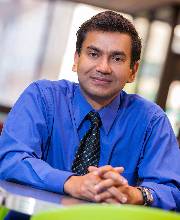 Shantanu Chakrabartty, Ph.D., Clifford Murphy Professor, McKelvey School of Engineering,
Washington University, St. Louis
Shantanu Chakrabartty, Ph.D., Clifford Murphy Professor, McKelvey School of Engineering,
Washington University, St. Louis
Title: Self-Powered Analog Systems for Security Applications
Abstract
While analog computing is becoming attractive for emerging machine learning hardware, in this talk I would like to highlight some unique features of analog systems that make it attractive for security applications. For low-resource internet-of-things (IoTs) like wearables, health-monitors, tags and sensors, existing authentication techniques (using encryption, strong hash functions and pseudorandom number generators) might be impractical for securing access to critical data. This is because these IoT platforms have limited computational bandwidth; limited availability of energy; and require real-time authentication. On the other hand, static identifiers like bar-codes, product IDs, embedded physical unclonable functions (PUFs) or stored private keys are vulnerable to theft, counterfeiting, replay attacks or tampering. In this talk I will present a hardware-software approach that could be used for a SecureID-type dynamic authentication on low-resource IoTs. The approach uses a quantum-based zero-power timer technology for time-keeping and for distributed synchronization without the need for any external powering (using batteries or energy-scavenging). Rapid trust verification and authentication is achieved by comparing the synchronized tokens generated by the IoT and a remote server. In the absence of any external powering, the dynamic tokens are secure against any power side-channel attacks, snooping and tampering. The hardware-software infrastructure also supports mutual authentication, where the IoT device could also query and verify the trust of its reader. In addition to using the zero-power timer technology for designing ultra-secure root-of-trust, I will also highlight some unique extensions of the technology for generating dynamic signatures that could be used for tracking and authenticating product supply-chain.
Bio
Shantanu Chakrabartty is a Clifford Murphy professor in the Mckelvey School of Engineering at Washington University in St. Louis. His research covers different aspects of analog computing, and in particular, self-powered systems and neuromorphic systems. Dr. Chakrabartty is a recipient of National Science Foundation's CAREER award, University Teacher-Scholar Award from Michigan State University and the 2012 Technology of the Year Award from MSU Technologies. Dr. Chakrabartty is a senior member of the IEEE with over 180 journal and conference publications along with twelve issued and pending US patents. He has served on the editorial board for the IEEE Transactions of Biomedical Circuits and Systems and currently serves as an associate editor of the Frontiers of Neuromorphic Engineering journal. Dr. Chakrabartty holds a Ph.D. from The Johns Hopkins University and previously he has held academic appointments at Michigan State University.
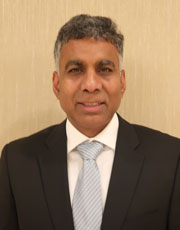 Sridhar Condoor, Ph.D., Professor, Aerospace and Mechanical Engineering
Sridhar Condoor, Ph.D., Professor, Aerospace and Mechanical Engineering
Title: Engineering Design -Then, Now and the Future
Abstract
As the age-old adage "necessity is the mother of invention " goes, humans, invented improvised products and processes to enhance the quality of life from time immemorial. The design remains a fundamental human activity and a hallmark of our ingenuity.
We can divide designers into:
- Innate designers - Know why, what, and how to design.
- Ignorant designers - Believe they know design and never know what they don't know.
- Trained designers - Become good at design through understanding and practice.
Our design knowledge has significantly evolved in the last six decades. Now we can evaluate the process, not just the outcome. Understanding is one of the keys to move from an ignorant to a trained designer.
This presentation will help you raise awareness of your thought process. The understanding helps in actively improving and controlling the process. Further, it will highlight the traits needed to succeed as a designer. While the skillset remained the same, the tools of the trade have changed. As a true designer wishes, you can have a glimpse of design in the future.
Bio
Dr. Sridhar Condoor is a professor of aerospace and mechanical engineering at Saint Louis University. His innovations include hubless wind turbine and valve for neurosurgery. As an entrepreneurial educator, he was instrumental in conducting faculty training workshops, innovations challenges and Tinker Camps. He was the editor for the Journal of Engineering Entrepreneurship. His research interests include heart valve design using 3D printing techniques, technology entrepreneurship, and design theory & methodology. He is involved in significant outreach efforts to promote entrepreneurial mindset in India - a member of the Governing Board for SRiX, a Technology Business Incubator in India.
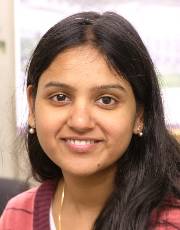 Era Jain, Ph.D., Assistant Professor, Syracuse University
Era Jain, Ph.D., Assistant Professor, Syracuse University
Title: Engineering Biomaterials for Temporally Controlled Therapeutic Delivery
Abstract
The delivery of therapeutic proteins and small molecule drugs continues to be a critical challenge in the treatment of many diseases including osteoarthritis (OA). Rapid efflux of drugs directly injected into the affected joint impedes success of many drug candidates. Injectable biodegradable polymeric carriers offer several benefits, allowing efficient drug encapsulation for site-specific delivery at a tunable rate. In this talk, I will present strategies for engineering polyethylene glycol (PEG) based biodegradable drug carriers for delivery of therapeutic growth factors and small molecule drugs for treating OA. I will demonstrate the use of PEG-based crosslinkers to generate a library of PEG hydrogels with tunable degradation rates to temporally control payload release. Biodegradable PEG hydrogels allow for sustained release of platelet-rich plasma (PRP) (a multicomponent growth factor mixture) which enhances its anti-inflammatory effects and shows improved outcomes in patient-derived osteoarthritic chondrocytes. Furthermore, I will discuss the development of a non-invasive clinically relevant murine model of post-traumatic OA for longitudinal monitoring of NF-κB activation and pain related behavioral measures. Finally, I will describe the design of PEG-based microspheres for sustained delivery of a small molecule antagonist of the NF-κB (a major pro-inflammatory pathway in OA) for early intervention and treatment of OA and its use in pre-clinical evaluation animal models of OA.
Bio
Dr. Era Jain is an Assistant professor at Syracuse University. Her primary research interests include the development of immunomodulatory biomaterials for drug delivery for treating musculoskeletal disorders and for tissue engineering. Prior to joining Syracuse University, she was a research scientist in the Department of Biomedical Engineering at Washington University in St. Louis in the laboratory of Dr. Lori Setton where she developed animal models of osteoarthritis for pre-clinical evaluation of small molecule antagonist of NF-κB. As postdoctoral associate in the laboratories of Dr. Silviya Zustiak and Scott Sell at Saint Louis University she developed biodegradable polyethylene glycol hydrogels for biomedical applications. She obtained a Ph.D. in Biological Sciences and Bioengineering from Indian Institute of Technology Kanpur (IITK), India in 2011 and a Bachelor’s in Pharmacy from India in 2004. During her doctoral studies, she worked on developing macroporous cryogel scaffolds for tissue engineering applications.
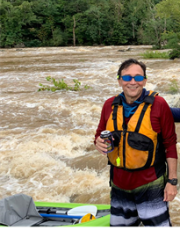 Theodosios Alexander, Sc.D., Professor, School of Engineering, Parks College at Saint
Louis University
Theodosios Alexander, Sc.D., Professor, School of Engineering, Parks College at Saint
Louis University
Title: Colloquium on Order of Presentation of Fundamentals of Thermodynamics
Abstract
In all engineering disciplines, except in thermodynamics, we build up fundamentals starting from simple observations, and we follow through with definitions of concepts based on equations.
In thermodynamics we say a version of: "temperature, energy, heat, entropy, are hard to define; but let me move on, and show you how we use these properties later on".
Is there a way to present thermodynamic concepts to entry-level engineering students with easily understood concepts, in which we also use a logical chain of statements, in which each concept is introduced with logical arguments and with (simple) equations?
Also, can these equations be non-circular definitions, in other words for EVERY CONCEPT, LHS = RHS where we know beforehand everything in the RHS.
How is heat defined like that? (It requires concepts of energy, temperature, entropy).
What happens when we take a measurement with an in-mouth mercury-in-bulb thermometer? Is there entropy transfer? If yes, how is entropy included in the definition of temperature?
I think the answer to all the above is yes, it can be done. However, this requires that entropy is introduced before temperature, and temperature is introduced before heat. In other words, heat is defined as the last concept (and it is not used to define temperature).
Can the concepts be presented in this sequence to entry-level engineering students, and with relatively-simple equations?
I think the answer to all the above is yes (and it can be presented in this fashion to entry-level university students, and even earlier).
Bio
Theodosios Alexander was born in Athens, Greece. His B.Sc. degree in Marine Engineering is from Newcastle Upon Tyne University, England; and his graduate degrees (three SM, and ScD in Mechanical Engineering) are from MIT. He has worked at J. J. McMullen Associates, at Northern Research and Engineering Corporation, at McDonnell Douglas and Boeing in industry. He has taught the thermodynamics material presented in this colloquium in about 90 undergraduate classes to date at Washington University in St. Louis, as James Watt Endowed Chair of Thermodynamics at the University of Glasgow, Scotland, as Professor and Chair of Energy Engineering at Queen Mary, University of London, and more recently at Saint Louis University.
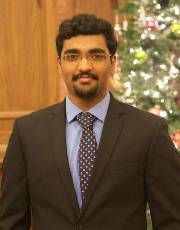 Shaun S. Mathews, M.S., Systems Engineer, Executive Transport Services and Support
(ETS&S), The Boeing Company
Shaun S. Mathews, M.S., Systems Engineer, Executive Transport Services and Support
(ETS&S), The Boeing Company
Title: An Inside View of Systems Engineering
Abstract
Systems Engineering can mean different things to different companies and different professions. This seminar would be intended to explain Systems Engineering from the perspective of a beginner SE and try to discuss about the engineering and leadership functions that we perform. I also intend to explain my career path to the young professionals looking to start a career.
Bio
Shaun Sam Mathews graduated with a Master’s degree in Aerospace and Mechanical Engineering from Parks College in 2019. He is currently working as a Systems Engineer at The Boeing Company under the Executive Transport Services and Support (ETS&S) department responsible for modifying Head of State Aircraft for US and other international customers. He had done an internship at Southwest Airlines as an Aircraft Performance Engineer while he was at SLU and another internship at Air India during his Bachelor’s degree in India.
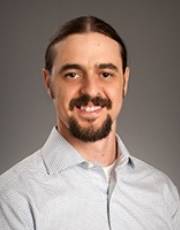 Gunes Uzer, Ph.D., Assistant Professor, Department of Mechanical and Biomedical Engineering,
Boise State University
Gunes Uzer, Ph.D., Assistant Professor, Department of Mechanical and Biomedical Engineering,
Boise State University
Title: Mechanobiology of Stem Cells in Bone
Abstract
Sensation of the mechanical qualities of the environment is critical in directing cellular function and, in the case of stem cells, regulating lineage selection. This seminar will focus on the identification of mechanical factors regulating mesenchymal stem cells in the bone marrow that provide regenerative capacity by replacing and reinforcing the skeleton at load bearing sites. The ability of mesenchymal stem cells to respond to mechanical cues generated during functional loading is critical for this capacity. I will discuss my laboratory’s findings that how mechanical coupling of nucleus with the cytoskeleton contributes to mesenchymal stem cell mechanosensitivity and fate selection. During the talk I will further highlight major research themes we are pursuing towards understanding cellular and tissue level mechanical adaptations, as well as strategies for treatment and rehabilitation of musculoskeletal impairments at the cellular level.
Bio
Dr. Gunes Uzer is an Assistant Professor in the Department of Mechanical and Biomedical Engineering at Boise State University. He joined to the department in August 2016. Dr. Uzer is the director of the Mechanical Adaptations Laboratory leading a multidisciplinary research program.
Studies in Mechanical Adaptations Laboratory are directed towards understanding how changes in tissue mechanical environment in relation to exercise, injury, aging and disuse regulate structural adaptations in cells to control signaling and eventually fate decisions in stem cells.
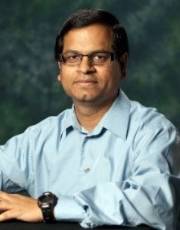 Saraju Mohanty, Ph.D., Professor, Department of Computer Science and Engineering,
University of North Texas
Saraju Mohanty, Ph.D., Professor, Department of Computer Science and Engineering,
University of North Texas
Title: Smart Healthcare--Demystified
Abstract
The health care system has evolved from traditional healthcare to telemedicine, connected-health (cHealth), electronics health (e-health), mobile-health (mHealth), to smart health (sHealth). The demand for remote healthcare is getting important than ever as evident from the situations in the hospitals during the coronavirus disease (COVID-19) outbreak. Smart healthcare built using Internet-Medical-Things (IoMT) is a key component in smart cities which can provide better and advanced medical facilities to the patients. IoMT, a specific instance of IoT, is a configurable dynamic network of networks, available anywhere, anytime, by anything and anyone. Smart healthcare provides many advantages which are called 7Ps including personalized care and participatory care. Smart healthcare is further evolving with the help of healthcare Cyber-Physical System (H-CPS) that integrates IoMT, electronic health record (EHR), and machine learning (ML) analytics obtained from sensor data and/or EHR. H-CPS consists of various components including sensors, biosensors, electronics, wearables, implantables, networks, EHR, machine learning (ML) analytics, middleware, firmware, and software. This talk will present detailed insight of IoMT based smart healthcare built as a H-CPS. The talk will address many questions about IoMT/H-CPS based smart healthcare including: (1) What is IoMT or Internet-of-Health-Things (IoHT)? (2) What is Healthcare H-CPS? (3) What are the critical components of IoMT/H-CPS? (4) What are the challenges of design and operation of IoMT/H-CPS? (5) What is smart healthcare? (6) What are the security, privacy issues and their solutions in smart healthcare? (7) Is edge computing or cloud computing better for smart healthcare?
Bio
Dr. Saraju P. Mohanty is a Professor at the University of North Texas. Prof. Mohanty’s research is in “Smart Electronic Systems” which has been funded by NSF, SRC, US Air Force, IUSSTF, and Mission Innovation. He has over 20 years of research experience on security and protection of media, hardware, and system. He introduced the Secure Digital Camera (SDC) in 2004 with built-in security features designed using Hardware-Assisted Security (HAS) or Secure by Design (SbD) principle. His the widely credited as the designer for the first digital watermarking chip in 2004 and first the low-power digital watermarking chip in 2006. He has authored 350+ research articles, 4 books, and invented 4 US patents. His Google Scholar h-index is 39 and i10-index is 149 with 6800 citations. He is a recipient of Fulbright Specialist Award in 2020, 12 best paper awards, IEEE Consumer Electronics Society Outstanding Service Award in 2020 for contributions to the IEEE CE society, the IEEE-CS-TCVLSI Distinguished Leadership Award in 2018, and the 2016 PROSE Award for Best Textbook in Physical Sciences and Mathematics category. He has delivered 10 keynotes and served on 11 panels at various International Conferences. He is the Editor-in-Chief (EiC) of the IEEE Consumer Electronics Magazine. He has been serving on the editorial board of several peer-reviewed international journals, including IEEE Transactions on Consumer Electronics and IEEE Transactions on Bigdata. He has been serving on the Board of Governors (BoG) of the IEEE Consumer Technology Society and has served as the Chair of Technical Committee on Very Large-Scale Integration (TCVLSI), IEEE-CS during 2014-2018.
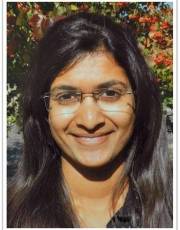 Susheera Pochiraju, Ph.D. Student in Civil Engineering, Parks College at Saint Louis
University
Susheera Pochiraju, Ph.D. Student in Civil Engineering, Parks College at Saint Louis
University
Title: A Study on Identification, Occurrence and Control of Novel Taste and Odor Compounds Causing T&O Issues in Drinking Water Utilities
Abstract
Taste and odor (T&O) issues have been a major concern among drinking water utilities as source waters are becoming increasingly vulnerable to algal blooms. Most of the literature focuses on the two most common T&O compounds – 2-MIB and geosmin, while there are several other compounds that have the potential to cause T&O events. The first objective of this study was to develop an advanced analytical method using solid phase microextraction (SPME) and gas chromatography-mass spectrometry (GC-MS/MS) to identify 18 T&O compounds belonging to various odor classes. The developed method was optimized for the 18 analytes and used to determine the holding time of the compounds in raw and treated water matrices. The second objective was to study the occurrence of these compounds with water utilities from the Midwest and Eastern US during the summer months. The study detected eight T&O compounds - 2-MIB, geosmin, β-cyclocitral, β-ionone, hexanal, indole, dimethyl disulfide and dimethyl trisulfide. While five compounds were detected above their threshold concentrations in the raw water, two of them (MIB and geosmin) were detected above threshold in the treated water samples. The third objective was to evaluate different treatment technologies to remove the T&O compounds based on adsorption and oxidation. Adsorption using powdered activated carbon (PAC) was tested and the removal efficiency of four types of PAC, made from different raw materials, was compared. PAC made from bituminous coal showed highest removal efficiency in treating T&O compounds. Other treatment methods based on oxidation using chlorine, permanganate, ozone and UV/hydrogen peroxide are currently being tested.
Bio
Susheera is a doctoral student pursuing a Ph.D. in civil engineering with a concentration in environmental engineering under Dr. Craig Adams, Dr. Lauren Weinrich and Dr. Christiane Hoppe-Jones. She joined SLU in fall 2018 and is expecting to graduate in spring 2021. Her Ph.D. is being supported by American Water, where she works with the water research group at the American Water Central Laboratory, Belleville, IL. She graduated with a thesis-based Masters in Environmental Engineering from University of Colorado Boulder in 2018.
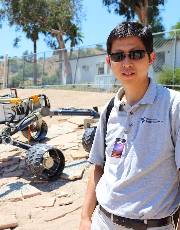 Yu Gu, Ph.D., Associate Professor, Mechanical and Aerospace Engineering, West Virginia
University
Yu Gu, Ph.D., Associate Professor, Mechanical and Aerospace Engineering, West Virginia
University
Title: Venture into the Unknown: Towards Increasingly Autonomous Robots
Abstract
The ability for human designers to foresee uncertainties for robots, and write software programs accordingly, is severely limited by their mental simulation capabilities. This predictive approach of robot programming grows quickly in complexity and often fails to handle the infinite possibilities represented by the physical world. As a result, robots today are task-specific or “rigid”; i.e., having difficulty at handling tasks or conditions that were not planned for. During this talk, the speaker will present his vision on robot autonomy. He will draw lessons from two decades of UAV and robot experiments (with lots of videos!), and propose several research directions in making future robots more intelligent.
Bio
Dr. Yu Gu is an Associate Professor in the Department of Mechanical and Aerospace Engineering at West Virginia University. His main research interest is in improving robots’ ability to function in increasingly complex environments and situations. Dr. Gu is a three-time NASA Centennial Challenge winner, a NASA NIAC Fellow, and an NSF REU site director. His research was featured in over 100 news stories by various media outlets. Dr. Gu’s research team is currently working on a precision robotic pollinator, an autonomous planetary rover, teams of robots for exploring underground environments, and swarms of ground and space robots.
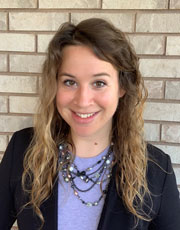 Shellie Sanford, Ph.D., Student Services Coordinator, Parks College at Saint Louis
University
Shellie Sanford, Ph.D., Student Services Coordinator, Parks College at Saint Louis
University
Title: The Ins and Outs of Parks College Scholarships
Abstract
Join this seminar to learn more about the Parks College scholarship process, how to find and apply for Parks scholarships, and how to best present yourself on your scholarship applications.
Bio
Shellie Sanford serves as the Student Services Coordinator for Parks College. In her role, she oversees Parks scholarships and mentoring programs. She also sends out the Parks Student Newsletter, assists with Parks student organizations, and plans and implements Parks student events, such as the upcoming E-Week events. She has a doctorate in Higher Education and enjoys anything and everything related to the Higher Education world.
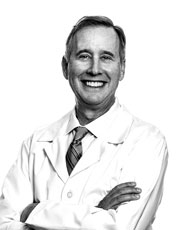 Richard Lieber, Ph.D., Professor and Chief Scientific Officer, Shirley Ryan Ability
Lab, Departments of Physical Medicine and Rehabilitation and Biomedical Engineering,
Northwestern University; Senior Research Career Scientist, Hines VA Medical Center
Richard Lieber, Ph.D., Professor and Chief Scientific Officer, Shirley Ryan Ability
Lab, Departments of Physical Medicine and Rehabilitation and Biomedical Engineering,
Northwestern University; Senior Research Career Scientist, Hines VA Medical Center
Title: Intraoperative and Laboratory Studies of Human Skeletal Muscle Contractures
Abstract
Skeletal muscle is a highly plastic tissue, responding both to level of use and amount of neural input. After cerebral palsy (CP) altered neural input can result in muscle contractures. We have studied the mechanics and biology of muscle from children with wrist flexion contractures secondary to CP. Dramatic architectural changes are observed in these children whereby sarcomere lengths are dramatically altered relative to patients without upper motor neuron lesions. This suggests dramatic alterations in the regulation of muscle growth in these children. Biomechanical studies of isolated single muscle cells reveal an increased passive modulus and decreased resting sarcomere length suggesting alterations in the cellular cytoskeleton. Gene expression profiling reveals a number of “conflicting” biological pathways in spastic muscle. Specifically, this muscle adapts by altering processes related to extracellular matrix production, fiber type determination, fiber hypertrophy and myogenesis. These transcriptional adaptations are not characteristic of muscle adaptations observed in Duchenne muscular dystrophy or limb immobilization. Superimposed upon the dramatic biological and structural adaptations is a loss in the number of satellite cells that are located throughout the muscle. Even the remaining satellite cells have epigenetic changes that can dramatically influence our ability to rehabilitate these muscles. Recently, we have shown that several anti-cancer drugs are able to reverse these epigenetic changes, thus “rescuing” the satellite cells and promoting myogenesis. Taken together, these results support the notion that, while contracture formation is multifactorial and neural in origin, significant structural alterations in muscle also occur. An understanding of the specific changes that occur in the muscle and extracellular matrix may facilitate the development of new conservative or surgical therapies for this devastating problem.
Bio
Rick Lieber is a physiologist who earned his Ph.D. in Biophysics from U.C. Davis developing a theory of light diffraction that was applied to mechanical studies of single muscle cells. He joined the faculty at the University of California, San Diego in 1985 where he spent the first 30 years of his academic career, achieving the rank of Professor and Vice-Chair of the Department of Orthopaedic Surgery. He received his M.B.A. in 2013 and is currently Chief Scientific Officer and Senior Vice President at the Shirley Ryan AbilityLab and Professor of Physical Medicine & Rehabilitation and Biomedical Engineering at Northwestern University in Chicago, IL.
Dr. Lieber’s work represents a translational approach, applying basic scientific principles to help patients who have experienced spinal cord injury, stroke, musculoskeletal trauma and cerebral palsy —an approach that is relevant to those who study biomechanics, rehabilitation and orthopaedic surgery. He has published almost 300 articles in journals ranging from the very basic such as The Biophysical Journal and The Journal of Cell Biology to clinical journals such as The Journal of Hand Surgery and Clinical Orthopaedics and Related Research. Dr. Lieber’s research focuses on design and plasticity of skeletal muscle. Currently, he is developing state-of-the-art biological and biophysical approaches to understanding muscle contractures that result from cerebral palsy, stroke and spinal cord injury.
In recognition of the clinical impact of his basic science studies, Dr. Lieber has been honored by the American Academy of Orthopaedic Surgeons (Kappa Delta Award; twice), the American Bone and Joint Surgeons (Nicolas Andry Award) the American College of Sports Medicine (Fellow), the Council for the International Exchange of Scholars (Fulbright Fellowship) and the American Society for Biomechanics (Borelli Award; Hay Award). He was also named a Senior Research Career Scientist from the Department of Veterans Affairs from which he has received continuous support since 1985.